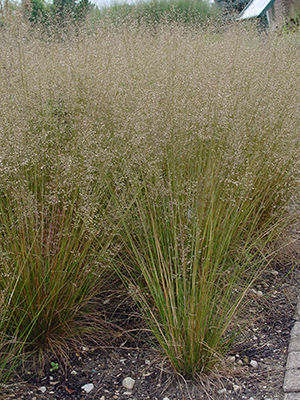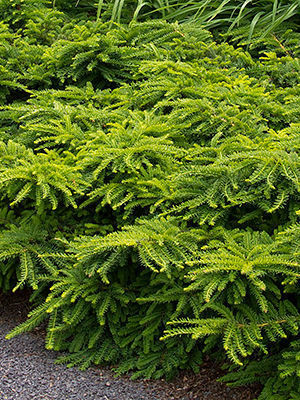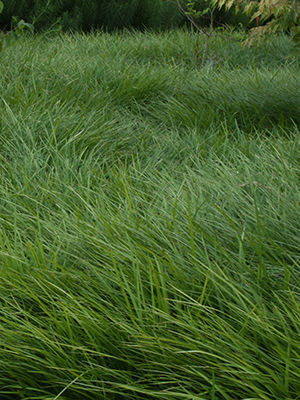1. ‘Tara’ Prairie Dropseed

Name: Sporobolus heterolepis ‘Tara’
USDA hardiness zones: 3 to 9
Size: 2 to 3 feet tall and wide
Conditions: Full sun; average, well-drained soil
This exceptional dwarf cultivar of our native prairie dropseed is a must-have for every garden, whether worked into mixed plantings or installed en masse as a ground cover. ‘Tara’ stands tall year-round and develops striking orange and red hues each autumn. It also holds its foliage and flowers through winter. If you want extra early-season color, interplant with spring bulbs.
2. Emerald Spreader® Japanese Yew

Name: Taxus cuspidata ‘Monloo’
Zones: 4 to 7
Size: 24 to 30 inches tall and 8 to 10 feet wide
Conditions: Full sun to partial shade; moist, well-drained soil
Most Japanese yew selections grow far too large for their allotted spaces but not Emerald Spreader®. This is the shortest Japanese yew cultivar available and can cover large and shady areas like few other low-maintenance plants can. Its finely textured, dark green needles, held on slightly weeping branches, look especially graceful growing atop and over the edges of walls. Avoid planting Emerald Spreader® in extremely sunny and windy exposures to avoid winter desiccation.
3. ‘Blue Ice’ Amsonia

Name: Amsonia ‘Blue Ice’
Zones: 4 to 9
Size: 1 to 2 feet tall and wide
Conditions: Full sun to partial shade; average soil
‘Blue Ice’ amsonia has proven to be one of our best front-of-the-border-plants-turned-ground-cover. It is easy to establish, and it increases symmetrically in diameter each season. Its glossy, dark green foliage holds up perfectly through the vagaries of our harsh summers and graces our gardens with a soft golden yellow in autumn. ‘Blue Ice’ dons beautiful rich blue flowers borne in tight clusters for several weeks in spring; they then quietly fade away, never needing to be deadheaded.
4. Creeping Liriope

Name: Liriope spicata
Zones: 6 to 10
Size: 6 to 12 inches tall and 1 to 2 feet wide
Conditions: Full sun to full shade; average soil
Creeping liriope is one of my favorite ground covers for both sun and shade. This adaptable creeper is semievergreen, grasslike, and drought tolerant enough to fend for itself under large shade trees, where root competition for water can be fierce. It also makes a great turf substitute on low-traffic lawns. Once established, the plant only needs an annual spring mowing to remove the previous year’s growth and edging to keep it within its allotted space for the upcoming season.
Jeff Epping is the director of horticulture at Olbrich Botanical Gardens in Madison, Wisconsin.
Photos: #1, courtesy of American Beauties Native Plants; #2, Doreen Wynja; #3 and #4, Kerry Ann Moore


















Comments
Log in or create an account to post a comment.
Sign up Log in